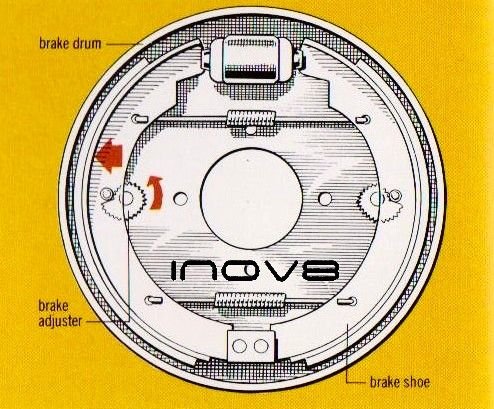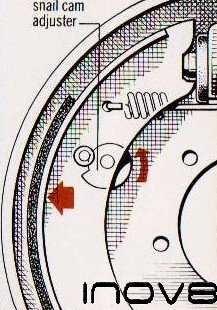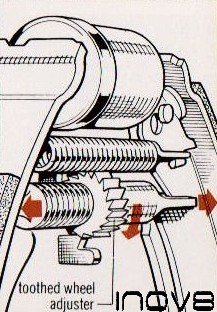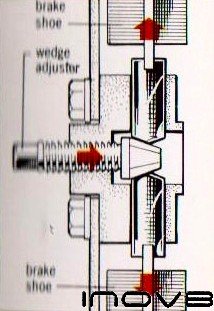How A Car Drum Brake Works

A Typical Car drum brake parts diagram
Drum brakes have adjusters which move the brake shoes nearer to the drum to compensate for wear After a time, the Friction material on the brake shoes wears down and so the surfaces of the brake shoes get further away from the drum surface with which they make contact during braking. This means that you have to press the brake pedal further to make the brakes work. The different types of adjuster work on the same principle.

Car Drum brake snail cam adjuster diagram
When the adjuster mechanism is screwed up one way, it pushes the pair of brake shoes apart so that they move outward towards the drum. When unscrewed the opposite way. the shoes are drawn closer together, away from the drum, either by a return spring or by a direct link.

Car Drum brake toothed wheel adjuster diagram
The Adjuster mechanism is inside the brake drum, but adjustment is usually made externally either by turning the protruding square or hexagon head of the adjuster, by turning a screw or by turning a toothed wheel. This Involves using either a spanner. brake adjuster tool. or screwdriver depending on the type. Some adjusters have a notched screw mechanism which you can feel clicking when the adjuster is turned This helps you to make an equal adjustment on all wheels to ensure that the brakes are balanced. The three types of adjusters in common use are the wedge adjuster, the snail cam type and the toothed wheel adjuster.

car drum brake wedge adjuster diagram
